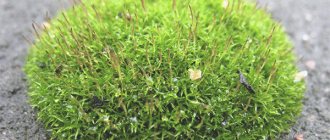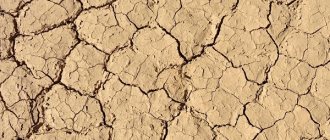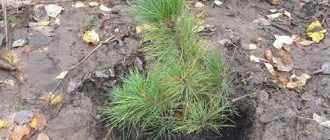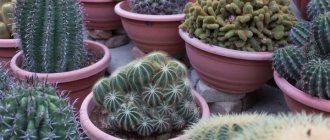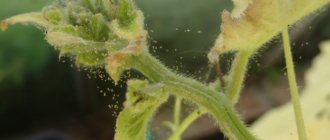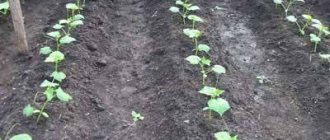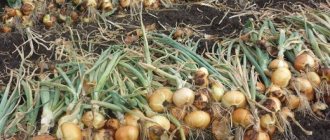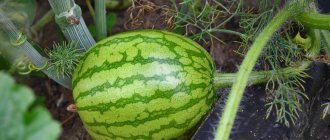Why does moss appear
In the greenhouse in the beds
In the greenhouse in the beds, moss is quite common. The main reasons for this phenomenon are the following:
- Constantly high humidity.
- Too acidic soil.
- Insufficient ventilation.
- Low light level.
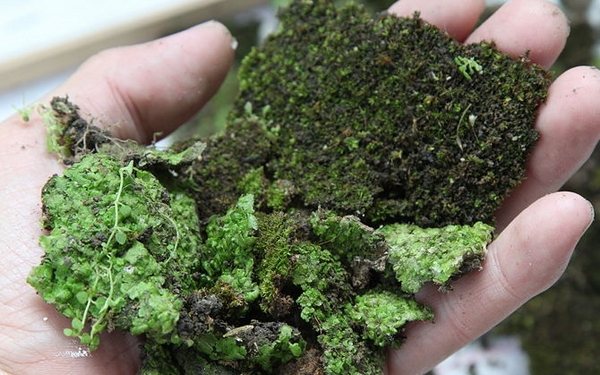
On the walls of the structure
In the greenhouse, moss can also settle on the walls of the structure. The main reasons for this:
- High humidity.
- Lack of fresh air.
In the garden and garden plot
In the garden, moss is even more common than in the greenhouse. And this phenomenon has the following reasons:
- Too much acidity of the soil.
- Insufficient aeration.
- The close occurrence of groundwater, which leads to high humidity.
- Shading.
To pinpoint the root cause of moss, you need to carefully consider it. If the cause of the appearance is too high a level of acidity of the soil, then it will be long and straight, and its base will be brown, and the top will be bright green. If the moss is short and looks more like a dense green rug, then it was formed due to high humidity.
Preventive actions
- Any body of water located near the garden site contributes to the gradual waterlogging of the soil, therefore in the spring it is recommended to make small grooves for the outflow of excess moisture from the soil.
- Do not forget about the annual application of fertilizers to the beds for the full development of cultivated plants, which will significantly reduce the activity of the moss.
- Regularly prune bushes and trees to avoid shading the area; in a sunny and well-groomed area, mossy thickets quickly die. It is recommended to sprinkle garden paths with small pebbles or wood chips.
- When planting vegetables in a greenhouse, do not forget about the need to ventilate and loosen the ground. Lack of fresh air, excessive humidity and lack of fertilizers provoke the development of the parasite.
- It is possible to prevent the appearance of islets of moss on the roof of buildings by installing copper roll materials, however, they rarely go on sale.
- In this case, it is possible to reduce the activity of the moss by regularly removing the leaves from the roof, as well as by cleaning the roof annually.
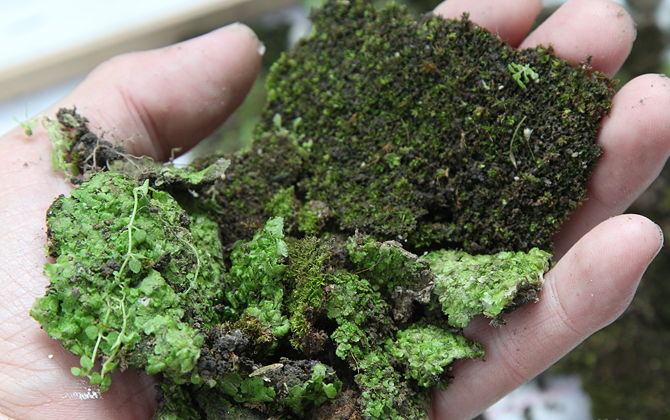

Mossy thickets should be cleaned with special brushes and gloves, collecting plant remains in buckets or containers
Harm done
At its core, moss is an aggressor. It has the properties to grow rapidly, while infecting nearby outbuildings and beds with its spores. In addition to aesthetic harm, it is also dangerous because it can cause significant damage to garden crops. It is able to absorb large amounts of moisture and nutrients from the soil. Thus, oppressing other plants. Over time, they will simply die, and the moss will begin to grow.
It is also capable of causing considerable damage to buildings. Under the moss layer, a constantly increased level of moisture remains, which contributes to the accelerated destruction of coatings. This is why it is so important to eliminate moss in a timely manner.
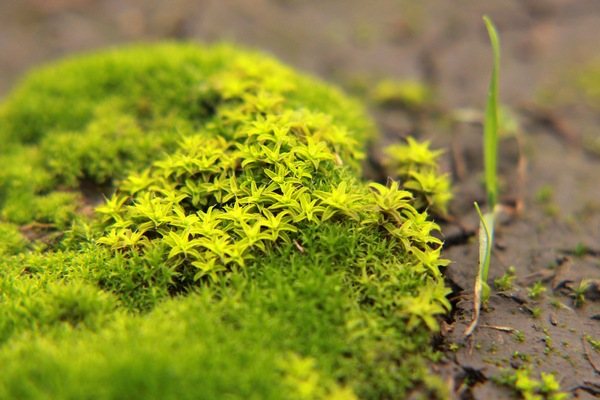

Consequences of greening of the ground
Algae and mosses compete with crops by removing nutrients from the soil.They absorb phosphorus especially actively, therefore, an excess of phosphorus-containing fertilizers during feeding can stimulate their rapid reproduction. They can also parasitize on other vegetation.
The soil covered with a green coating and elements of buildings or decor do not look aesthetically pleasing. Greening the soil in the beds is a signal of impaired maintenance of it or increased acidity, all of this together negatively affects the crops grown by humans.
Important! In order not to harm the soil and crops, the instructions for the dosage of copper sulfate should be strictly observed. This substance should not be more than 1 g per 1 m².
Why moss is dangerous for greenhouse plants
For greenhouse plants, moss is dangerous as follows:
- It has the ability to increase the already fairly high level of humidity.
- Thin green moss threads actively absorb nutrients from the soil, as a result of which the plants grow very poorly.
- A dense moss cushion disrupts the aeration processes in the soil, that is, it restricts the access of oxygen to the plant root system.
- If you do not fight with moss, then it contributes to partial waterlogging of the soil.
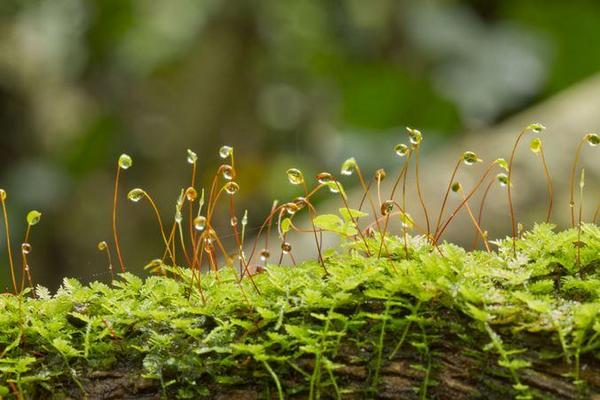

Paving Slab Care Tips
Any crack in the sidewalk increases the risk of mold and weeds, so paving care should be taken.
- You cannot drive a car on a tile if it is not designed for it.
- Do not drop heavy objects onto the path.
- You need to sweep the tiles regularly, but only with a broom or a "soft" plastic brush to avoid scratches, and dirty places can be washed with water from a hose or sink.
- It is necessary to identify and remove any suspicious spots on the paving stones in a timely manner.
- Seams should be added occasionally.
- Any chemical treatment should not cause crumbling or deformation of the tile.
- Anthills should be dealt with (vinegar, borax, special preparations, etc.).
- If desired, the paving stones can be treated with a water-repellent agent - this will reduce the risk of water penetration and destruction of the top layer of the coating.
- In winter, the tiles should be cleared of snow, but only with a wooden or plastic shovel.
Thanks to such measures, you can prevent the appearance of weeds and moss on the paving stones or remove them in a timely manner. As a result, the service life of the coating will significantly extend, and the garden path paved with tiles will always remain very pretty and clean!
How to deal with moss
The choice of this or that method of dealing with moss depends on its location.
In the greenhouse
You need to fight an unwanted guest in the greenhouse as soon as possible, the greenhouse microclimate will only contribute to its accelerated growth. This can be done in the following ways:
Improve air exchange
To improve air exchange in the greenhouse, you need to organize its regular ventilation. You should also temporarily stop watering. At the same time, doors and vents must be constantly open. In this case, the surface of the soil must be constantly loosened. Holes need to be made in the soil with a pitchfork, this will improve air exchange in it.
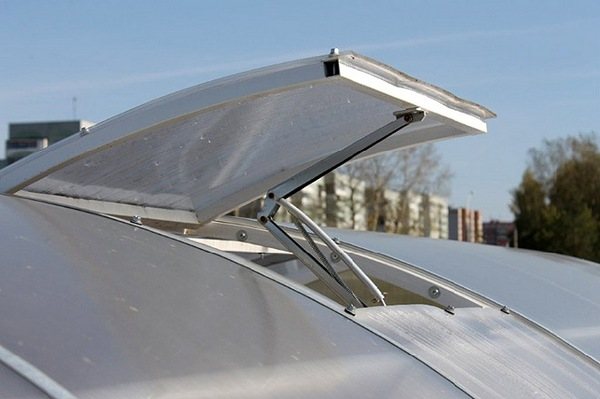

Reduce soil acidity
If the reason for the appearance of moss in the greenhouse is a too high level of soil acidity, then it must be reduced. To do this, you can use the following deoxidizers:
- wood ash;
- dolomite flour;
- lime fluff;
- a piece of chalk.
Also, good results are obtained by using green manure plants, which have the ability to reduce soil acidity. For example, you can use phacelia, vetch or rye.
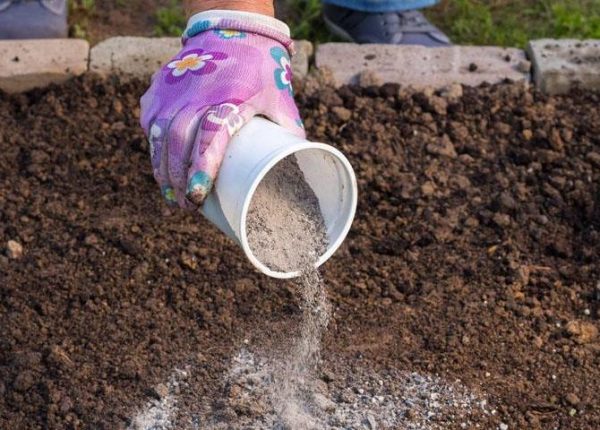

For example, you can use the following moss control scheme:
- Scatter wood ash over the soil surface and dig it up.
- Sow green manure immediately after adding ash. You can use oil radish or mustard. Within a month, they form a dense grassy carpet.
- After the growth of the siderat, plant the seedlings directly into it.
- After the seedlings begin to grow, the green manure must be mowed and left in place as a mulching material.
- After harvesting, the sowing of green manure should be repeated.
There is the following standard for the application of lime fertilizers:
- In normal fertile soil, once every 4-5 years is enough.
- In light soils - every 3-4 years.
- In severe cases - 1 time in 5-6 years.
How to cultivate the soil in a greenhouse (video)
Process the frame
Fighting moss in greenhouse beds will be useless if you do not process the frame. To do this, you can use iron sulfate. It allows you to effectively remove moss from the structure.
On the trees
You can manually remove moss from trees. For this, it is most convenient to use a metal brush or scraper. The moss layers are carefully cut to the wood. This removal is best done in the spring, at which time the moss is easily removed from the trunk. At the end of the work, the wood is treated with three percent copper sulfate.
You can also remove unwanted vegetation using chemicals. To do this, you need to take potash and about 150 g of carbolic acid. A solution is prepared from them in a bucket of water, with which the moss is processed. In the absence of potash, it can be replaced with wood ash. It will take about 5 kg for a bucket of water. After such treatment, the dying off of the moss occurs in a few days.
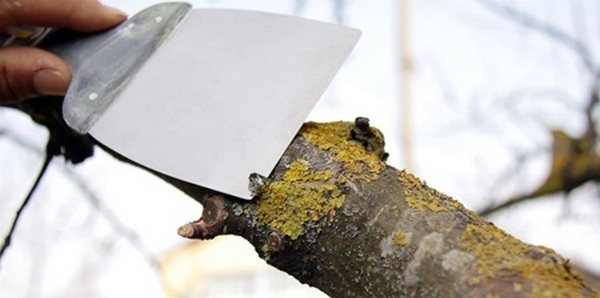

On asphalt and garden paths
You can use a high pressure car wash to remove moss on your garden path or asphalt. But this method will not save you from it for a long time. You can also try using a mixture of sand and soap solution when sweeping the walkway.
Also you can make a vinegar-based detergent. To do this, you need to dilute 1 liter of 7% vinegar in 1 liter of water. Next, the path or asphalt should be swept and cleaned of debris. Then the resulting solution is sprayed over its surface. This method is most effective on a clear sunny day. If necessary, problem areas can be processed again.
Important! Before using vinegar on colored paving slabs, you should first test its effect on a small area.
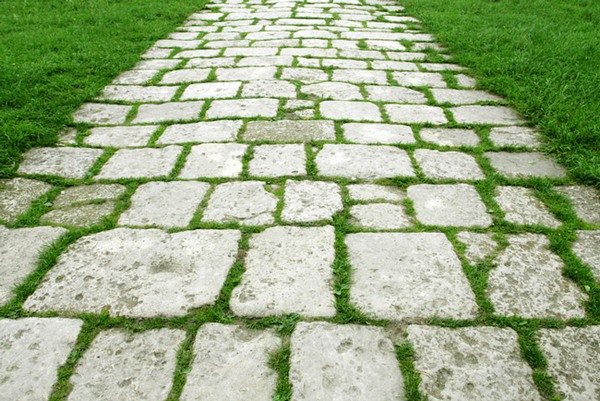

In the garden and garden plot
In order for the fight against moss in a garden plot or vegetable garden to be effective, first of all, the cause of its occurrence should be eliminated. If the reason lies in excessive soil moisture, then drainage should be carried out, and the surface of the earth should be leveled. This can be done in the following ways:
- Add sand to the soil.
- Build a drainage system. Tearing out several grooves around the perimeter, along which excess moisture will drain.
- Improve aeration by making holes in the soil with a fork or simply digging it up.
If the reason for the appearance of moss lies in too acidic soil, then it is necessary to deacidify it. For this purpose, spring liming is carried out. For this, lime is used, which is brought in for digging at the rate of 50 kg per 1 hundred square meters. You can also add dolomite flour, wood ash or chalk for digging.
A more radical method of getting rid of moss in a summer cottage can be special chemicals or herbicides in another way. They are able to burn out unnecessary vegetation at the root very well. They are used in cases where moss is actively growing throughout the garden area. They are used in the morning in dry, calm weather. The infected area is treated with a spray bottle. After 2 days, it is spilled with water.
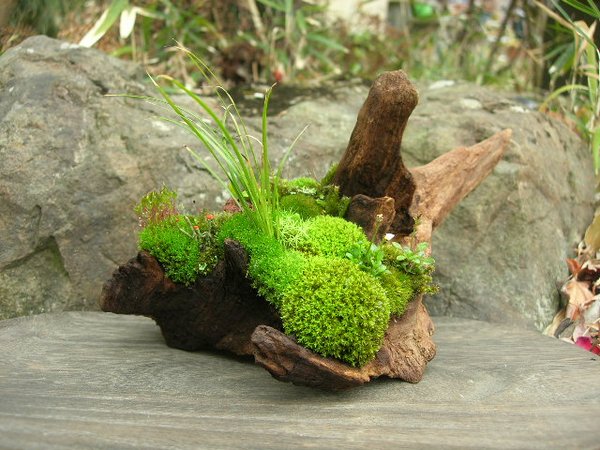

The ground in the greenhouse was covered with a green coating. Prevention of greening of the soil
It's no secret that preventing unwanted consequences is easier than actively fighting them after the onset. This is also true for green soil in a greenhouse. The best prevention in this case is mulching and crop rotation.
The benefits and technology of soil mulching
Mulching is the covering of the soil with organic and synthetic materials that allow:
- prevent weeds from germinating;
- avoid drying out the earth by long-term preservation of moisture in it;
- provide the proper temperature regime for the root system.
Synthetic materials include non-woven fabrics and films of industrial production. Organic mulch can be: cut grass, hay, tree bark, sawdust, straw, needles. However, the latter cannot be used on acidic soils, as it will further aggravate their condition.
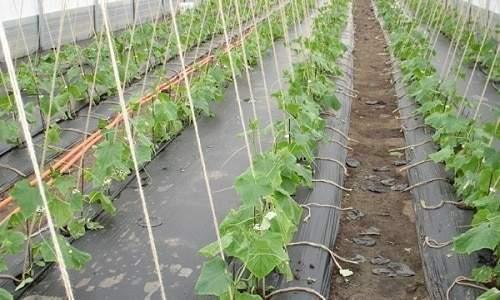

Mulching with foil
Note! Organic materials for covering are preferable, since in the process of decay they additionally fertilize the soil.
Mulching technology is simple: the soil is first watered, then loosened with hoes and pierced with a pitchfork to ensure air circulation, then mulch is laid. And there are several nuances here:
- Mulching is recommended in late spring or early summer, when the soil has already warmed up.
- When laying mulch, it is necessary to leave a space between it and the trunk of the plant for the same air circulation.
- When using cut grass as a cover, you must first dry it for a few days to avoid parasites spreading to garden crops.
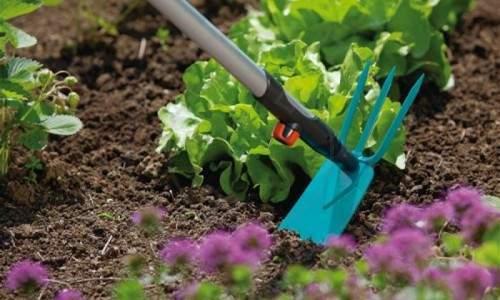

Loosening the soil before mulching
Mulching is an effective method of preventing the appearance of mosses and algae. Its use allows you not to think about why the earth turns green in the greenhouse.
The basics of crop rotation in greenhouses
Crop rotation is an alternation of planted horticultural crops, performed within the same plot annually. Why is it needed?
Each type of plant needs nutrients in a specific set and volume. In this regard, they were divided into three large groups - with a large, medium and small need, respectively. By alternating planting crops in this sequence, you can rationally use the land resources, prevent their depletion and uneven distribution.
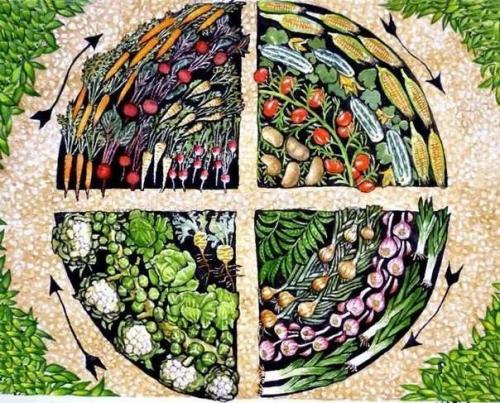

The principle of crop rotation of horticultural crops
In the fourth year, the earth should be given a rest, having thoroughly fertilized it. This makes crop rotation an effective prevention of mosses and algae due to excess phosphorus in the soil.
Note! This scheme is relevant when there are several greenhouses with different types of plants. But what if there is only one greenhouse, and you grow only one crop?
The easiest option is to make holes in the greenhouse with a volume of at least 10 liters at a distance of 25-35 cm from each other, fill them with compost and plant plants in every second of them. The seedling-free compost holes can be sown with lettuce or radishes. The next year, you will do the opposite, thereby performing a crop rotation.
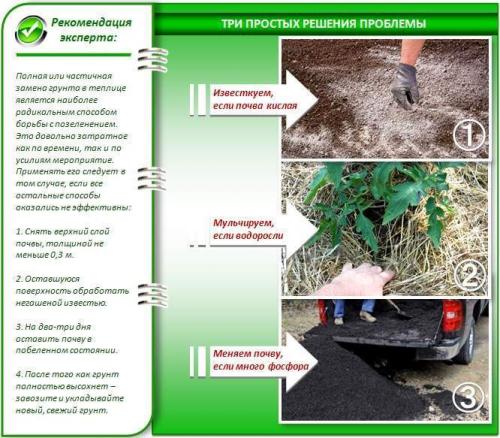

Three solutions to fix greening
Another solution is to make the number of holes equal to the number of plants, fill up the compost and plant them. Next year, you will have to extract this compost, replacing it with new one.
Thus, a competent and attentive approach to maintaining a favorable microclimate in the greenhouse and caring for the land will help you get a good harvest without unnecessary problems and not puzzle over why the ground turns green in the greenhouse. Still, mosses and algae should not bloom in the greenhouse!
Arseny addressed us the following question: "Why does the earth turn green in the greenhouse?"
Of course, one should not admire the soil that has unexpectedly changed its usual color: one must carefully study the causes of the phenomenon and, without delay, begin to eliminate it.
Useful uses of moss
Maybe before you deal with moss, you should pay attention to how it grows.Moss is very often a spectacular element of landscape design. There are quite a few ways to use it when decorating certain structures.
For example, it can be used to decorate artificial ponds, fill the space between the tiles of the walkway, or cover various stone vases or sculptures with it.
Moss has the ability to visually hide all the flaws of landscape design and smooth out irregularities. It is also almost always used to create Japanese-style gardens.
How to get rid of moss in the garden: other recommendations
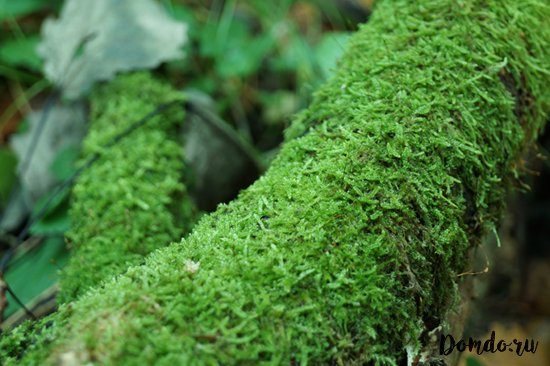

Moss control requires an integrated approach
Moss is a very aggressive pest that quickly takes over the garden. He causes many difficulties and harm to summer residents. However, it is quite possible to cope with this weed. If you follow certain preventive measures, as well as deal with the destruction of moss in time, you will be able to get rid of this problem for a long time.
Before starting a confrontation with this plant, it is necessary to carefully analyze the options for its beneficial use. After all, moss can become a decoration of a backyard territory and a plot. For example, he perfectly decorates or decorates landscape design. If you put moss on the bottom of an artificial reservoir, you get a very effective detail. They can also decorate the surfaces of flower beds, sculptures, as well as recesses between road tiles.
In any case, there are a large number of ways to decorate a summer cottage. Moreover, moss does an excellent job with this task. For this reason, it is worth thinking about the correct and appropriate use of this weed.
Tips and Secrets
- Do not use copper sulfate solution to destroy moss in greenhouses or garden beds. It will destroy beneficial plants and microorganisms that live in the earth, and significantly reduce its fertility.
- To prevent the growth of the parasite on the lawn, you need to regularly mow the grass, and the mowing height should be no more than 6 cm.
- Favorable conditions for the growth of moss are not only waterlogging of the soil, but also an insufficient amount of moisture. Grass and useful plants become weak during prolonged drought, and after the first abundant watering or rain, a green cover will immediately appear on the soil surface.
- During the season, it is recommended to add wood ash under the roots of the plants. It is an excellent fertilizer and also kills spores that cause moss to grow.
- On moss-free areas of the lawn, it is better to sow boulders, fescue or bluegrass.
- Before planting vegetable and horticultural crops, you can sow the soil with siderates - oats, mustard, lupine. They saturate the soil with oxygen and nutrients, which interferes with the development of parasitic plants.
- When digging up a plot in autumn and spring, you need to try to level the plot as much as possible, since moss grows best in pits, lowlands and depressions.
- Indoor plant lovers can use moss to improve the condition of flowers. An infusion is prepared from it, which is used to destroy fungi and pathogenic microorganisms, and it is also convenient to grow violets, orchids and other crops that require high soil acidity on a mossy "carpet".
Getting rid of moss is not an easy task, as this parasite is amazingly resilient. It can only be solved by using an integrated approach, but in the future the owner of the site will need to maintain the optimal condition of the soil, otherwise the unpleasant green carpet will appear again.

